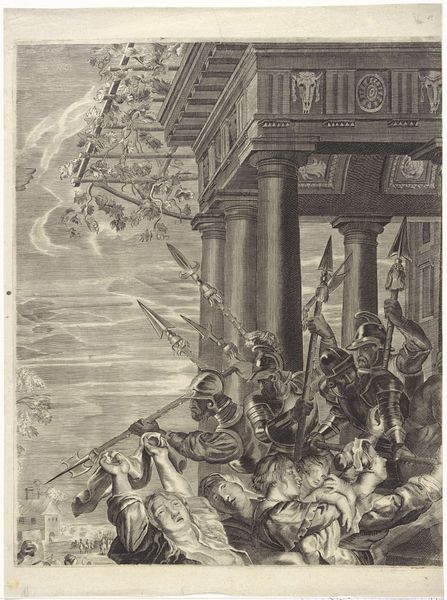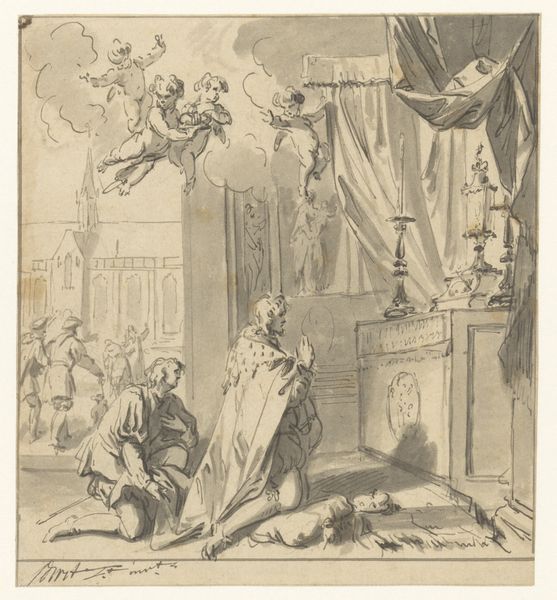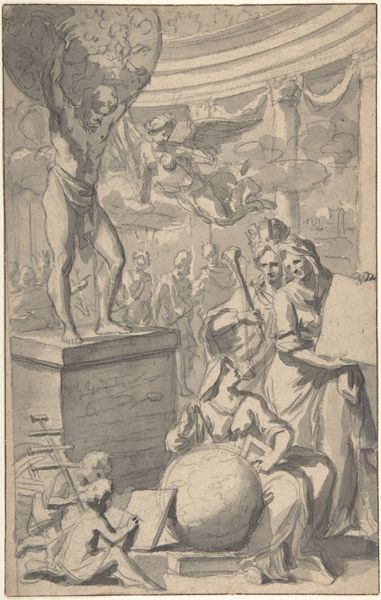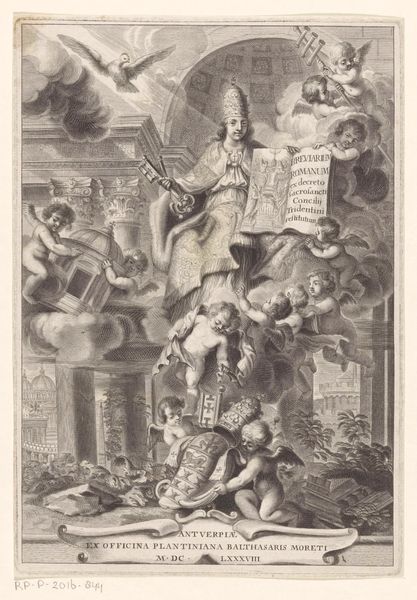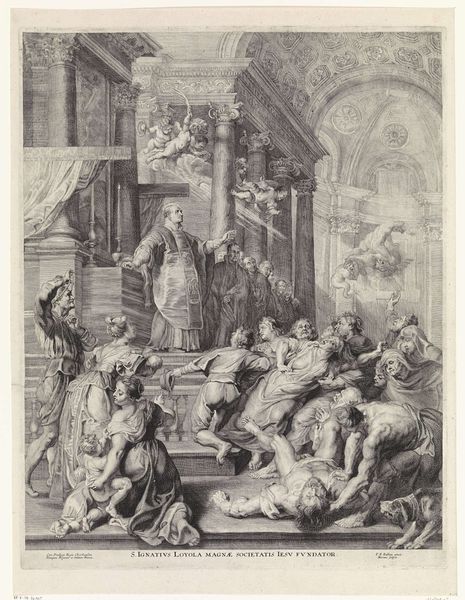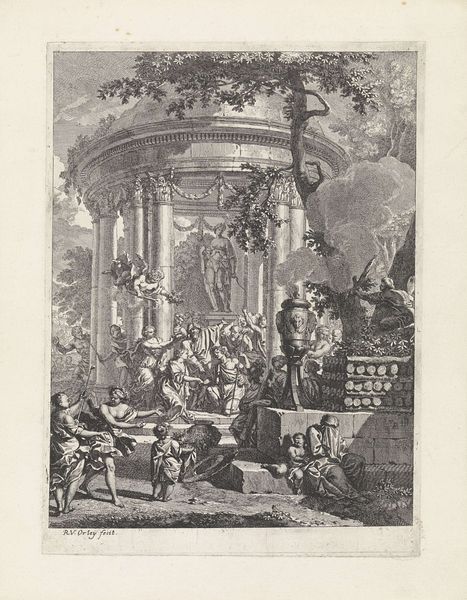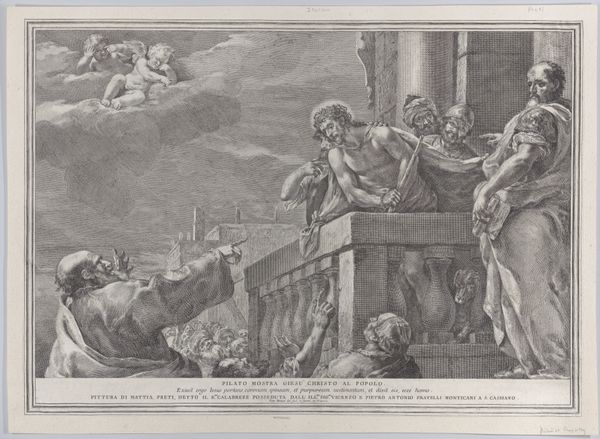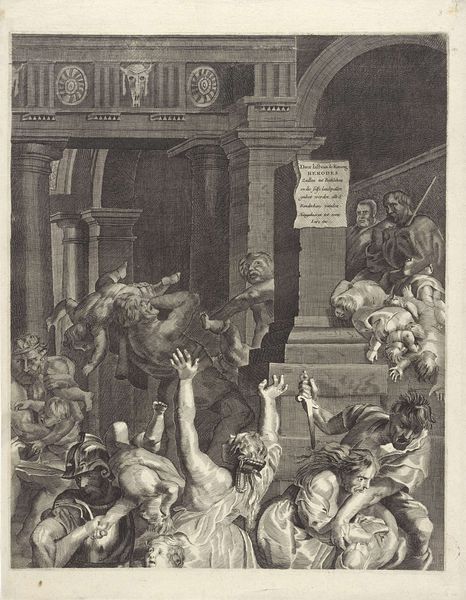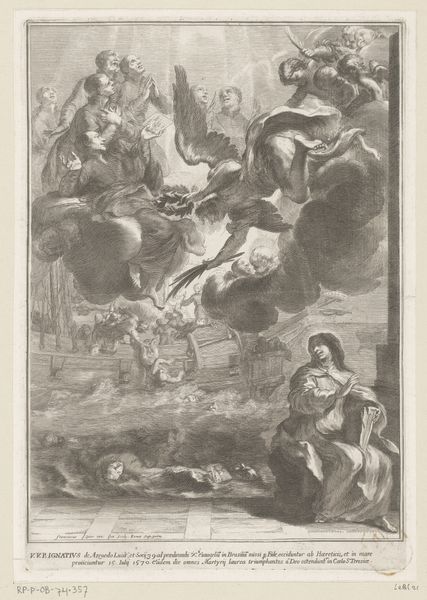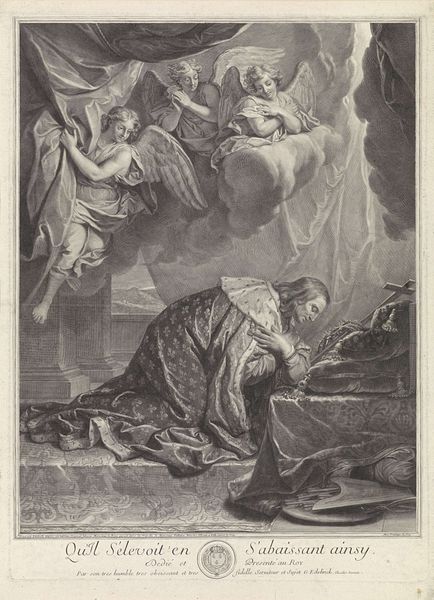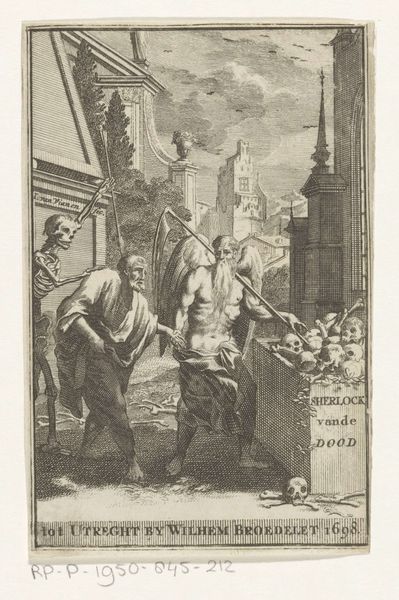
Visioen van Ezechiël over het dal van beenderen, linkerhelft 1530 - 1582
0:00
0:00
print, engraving
#
allegory
# print
#
mannerism
#
figuration
#
history-painting
#
engraving
Dimensions: height 411 mm, width 334 mm
Copyright: Rijks Museum: Open Domain
Curator: This is the left half of Giorgio Ghisi’s engraving, “Vision of Ezekiel on the Valley of Bones,” made between 1530 and 1582. It is currently housed here at the Rijksmuseum. Editor: Ghastly, isn’t it? The sharp lines of the engraving create such a stark, morbid atmosphere. All those meticulously rendered skeletons! It’s both horrifying and fascinating. Curator: It really speaks to the anxieties of the period. The print circulated widely and reflected anxieties about death, disease and divine judgment that resonated within Reformation Europe. Prints were powerful tools for propagating ideas, religious or otherwise. Editor: You’re absolutely right, and what strikes me about Ghisi's visual handling of that message is the incredibly sharp focus. Note the strong diagonal line from lower right to the top left, giving a compositional pull against what might be quite chaotic. Curator: The revival of classical art also influenced the creation of the print. The monumental architecture in the engraving references the artistic values of classical antiquity. The vision is clearly shaped by Ghisi's understanding of history. Editor: See how the classically inspired architecture contrasts with the rather chaotic imagery of decaying bodies. Then your eye shoots upwards where the artist juxtaposes heavenly putti holding a scroll with these grotesque figures! The high detail enhances the disturbing beauty of it all. Curator: Ghisi masterfully uses printmaking to translate religious vision to reflect on his own world and historical consciousness. He certainly made an indelible mark, so to speak. Editor: Indeed, a tour-de-force of the engraver's art and chilling reminder of mortality's grim embrace. Curator: And through careful study, it reveals a visual history of theological uncertainty during periods of religious reformation.
Comments
No comments
Be the first to comment and join the conversation on the ultimate creative platform.
